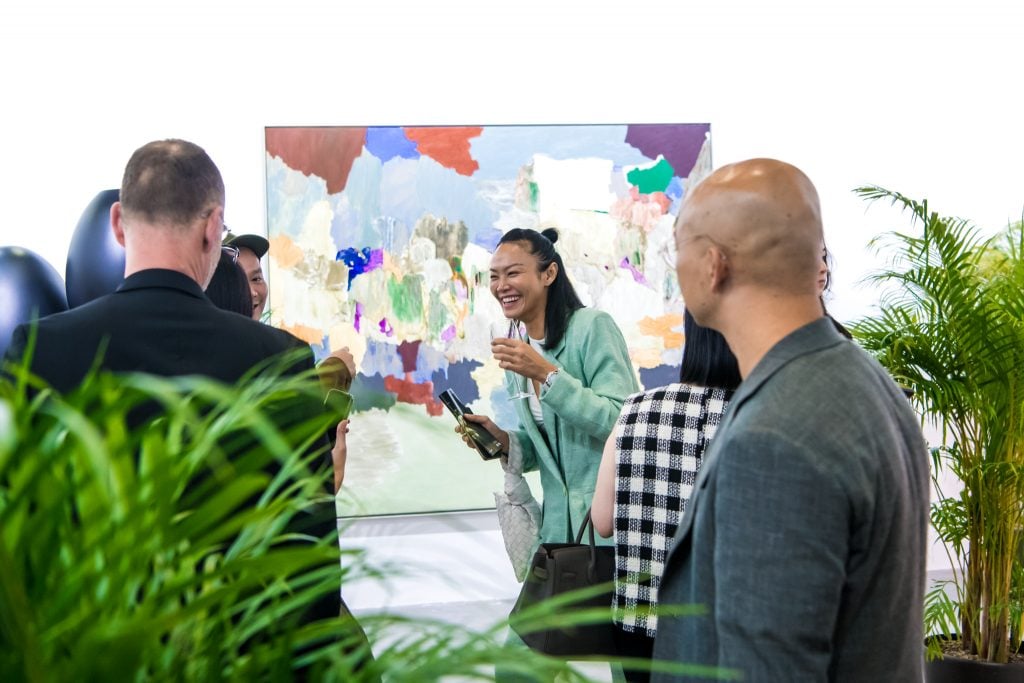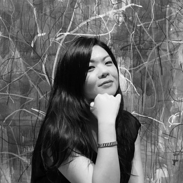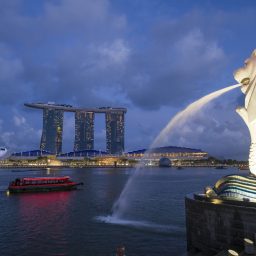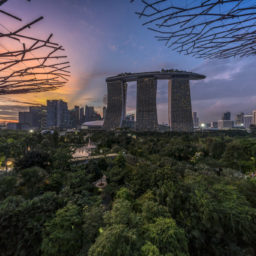The long-awaited opening of Singapore’s ART SG fair, which finally took place this week at the Marina Bay Sands, is significant for many reasons. The first is that as one of the early fairs in an already busy art calendar, its results can set the tone for the year. Second, as those in the art world are keen to explore new markets, the fair’s debut is a test to see if this city-state in Southeast Asia can bounce back from the dramatic cancellation of Art Stage in 2019 and become a key market hub in the region alongside Hong Kong and Seoul.
The first two days of the fair, which opened to VIPs on Wednesday, showed some promising signs. Excitement was palpable in the (hot and humid) air this week, especially since the event’s debut had been postponed four times before. A notable crowd traveled to Singapore for the event, helped by the recent relaxation of Covid-19 restrictions in the region as even China had dropped its zero-Covid policy (albeit very abruptly), with Hong Kong following suit and opening its borders.
Art lovers journeyed not just from neighboring Southeast Asian countries, but also from South Korea, Hong Kong, Taiwan, mainland China, and Japan, as well as from Europe and beyond. While in town, many indulged in local delicacies like pepper crab and chicken rice and partied until almost dawn at the local nightclub Marquee. Collectors seen on the ground include: Swiss mega collector Uli Sigg; Patrick Sun and Alan Lo from Hong Kong; Alain Servais from Belgium; Noh JaeMyung from South Korea; Singapore-based Linda Neo and Albert Lim and Nathaniel Gunawan; and the controversial collector and museum founder Michael Xufu Huang from China.

Art lovers taking snapshots at Sullivan+Strumpf’s booth at ART SG. Photo: Vivienne Chow.
“Southeast Asian collectors are excited about the fair, one that is finally happening in our neighboring country Singapore, which is a hub for the region,” said Manila-based Timothy Tan, one of the collectors who flew in to attend the fair. “Some of the international galleries exhibiting are new to collectors from the region and they are interesting.”
Tan pointed out that buyers from the region tend to focus more on art originating locally, but this is beginning to change. “More are open to collecting works from other places. [ART SG] is a nice gateway to meet the galleries,” he noted.
But perhaps more importantly for an art fair, some galleries were reporting sales, albeit they were less robust than those typically seen at major contemporary art fairs in the West, Hong Kong, or even Seoul. The art market outlook for 2023 may not be as grim as some industry insiders in the West had predicted—or at least not in Asia. It seems Southeast Asia—a region largely overlooked by the West but where deep-pocketed collectors have quietly bought art for a long time—may be a conducive market after all, especially now that Singapore is experiencing an influx of Chinese money.
Rich elites reportedly have been fleeing mainland China and Hong Kong amid the increasingly unpredictable socio-political and geopolitical environment. The number of family offices in the city-state has gone from 400 in 2020 to 700 today. “ART SG has arrived at a perfect time,” said Leo Xu, a senior director at David Zwirner in Hong Kong.
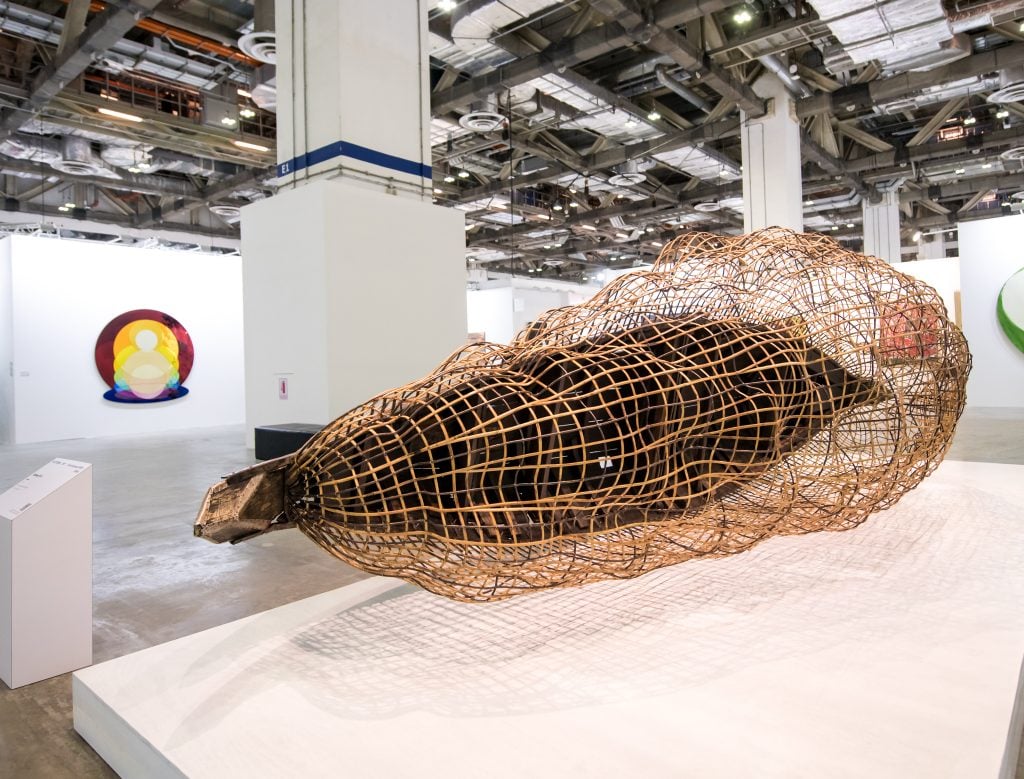
Tomio Koyama Gallery. Courtesy of ART SG.
Of the 160 galleries from 30 countries and regions featured in the inaugural edition of ART SG, nearly half have shops outside the Asia-Pacific region. The rest have locations across the region, from Japan and South Korea to mainland China and Hong Kong. Around 20 operate in Singapore, and less than 10 in Jakarta, Bangkok, and Kuala Lumpur. Prices of works on show were diverse, ranging from a few thousand to over a million dollars—a very high price point for the region.
Exhibitors spanning two floors of the exhibition center were assigned to categories similar to most major art fairs. There was a main galleries sector; a “Focus” section for presentations of solo or duo artists or thematic exhibitions; “Futures” area to showcase galleries under six years old; and “Reframe,” which focuses on digital and crypto art.
Some collectors commented that the basement floor, which was where most of the big galleries were located, reminded them of Art Basel Hong Kong. The Art Assembly, the team behind ART SG, is the very same crew that launched ART HK in 2008, which was then sold to Art Basel’s parent company MCH, becoming Art Basel Hong Kong in 2013.
International blue-chip galleries all reported sales during the first two days. White Cube, for example, said it sold 17 works on the opening day alone, totaling around $3 million. Notable sales from the gallery include: Anselm Kiefer’s 1981 canvas Dein Goldenes Haar Margarete, which sold to a collector in Indonesia for €1.2 million ($1.3 million); Antony Gormley’s cast iron sculpture Nerve (2020), priced at £450,000 ($549,144); a David Altmejd sculpture ($60,000, sold to an Australian); two editions of Tracey Emin’s bronze Belligerence (2014), which went to European and Asia collectors for £95,000 each ($115,930); Christine Ay Tjoe’s paintings Soluble Integrants ($165,000, sold to a buyer in China) and Docile Black 3 ($260,000, sold to a Hong Kong collector); and a work by Marguerite Humeau (£65,000/$79,320, sold to a buyer in Taiwan).
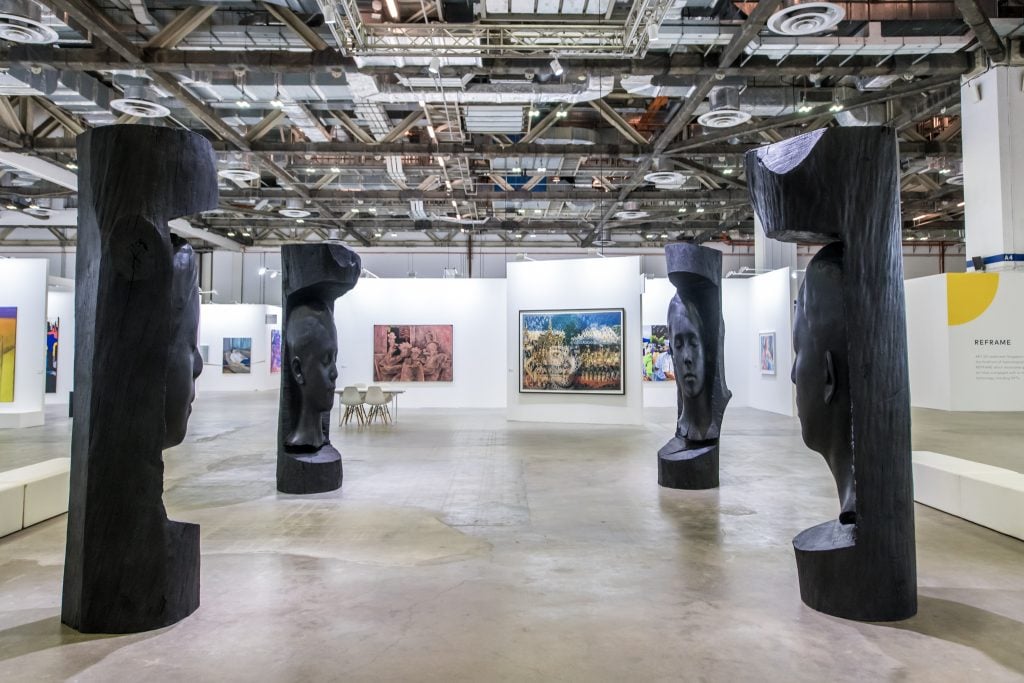
Jaume Plensa sculptures on show at ART SG 2023. Courtesy of ART SG.
The Museum MACAN in Jakarta bought two works by the late artist Ashley Bickerton for an undisclosed sum from Gagosian. Pace sold several pieces, including those by James Turrell ($950,000), Keith Haring ($250,000), Lee Ufan ($150,000), and Louise Nevelson ($105,000). More than half the works on David Zwirner’s booth found buyers, including pieces by Neo Rauch, Wolfgang Tillmans, and Wolfgang Tillmans, totaling more than $2.5 million.
Lehmann Maupin, which just appointed former deputy director of the Asia Society Museum in New York Ken Tan as its Singapore-based director, placed works in local collections. Tammy Nguyen’s Our Ministry (2022) sold for $90,000 to a private collection in Singapore, while four new works by Mandy El-Sayegh, priced at a combined total of $335,000, went to different collections across Singapore and the region.
The U.K. gallery Unit London, which amassed a strong following in Asia during the pandemic through its social media channels, made its fair debut in Asia, selling out its two-artist booth of works by Hong Kong’s Stephen Wong Chun Hei and Seth Armstrong from Los Angeles, priced between $10,000 and $30,500. One of Wong’s paintings went to a Malaysian private collector, who is a trustee of several institutions across the world.
“It is our first time here in Singapore… Many local collectors were already aware of our program as they’ve engaged with the gallery online for the last few years. But we have been delighted to meet lots of new collectors that really span all age groups—from very active budding collectors in their late 20s through to the more senior collectors who are interested in diversifying their collections of Southeast Asian artists,” Unit London’s co-founder, Joe Kennedy, told Artnet News.

Works by Hong Kong artist Mak2 on show at De Sarthe’s booth at ART SG. Photo: Vivienne Chow.
Regional galleries also reported sales. Whitestone, which recently opened a new space in Singapore, sold out all its pieces by the hot young Japanese painter Etsu Egami, priced at $10,000 to $30,000. WOAW Gallery, which also just inaugurated an outpost in the area, sold works by James Goss, Jon Burgerman, and Charlie Roberts for prices ranging from $9,000 to $22,800. Hong Kong’s De Sarthe gallery, which opened a space in Arizona last year, sold works by Mak2 and a painting by Zhong Wei, for prices ranging between $10,000 and $30,000. Artworks by young Singaporean artists Faris Heizer, Aisha Rosli, and Khairulddin Wahab, priced between $5,800 to $9,500, found buyers at Singapore’s Cuturi Gallery.
“The Southeast Asian market has been too rooted in their own local culture, but change is happening. Collectors have the desire to embrace what’s happening on the global stage and in international art,” noted dealer Pascal de Sarthe.
However, some regional dealers reported that sales have been slower than expected, Artnet News has learned. They still made sales, but to existing clients in the region rather than to new ones. While the VIP day and vernissage were packed with visitors, the aisles felt much more spacious on the second and third days. Some collectors took more time to make their purchases, especially those contemplating works by Southeast Asian artists new to them.
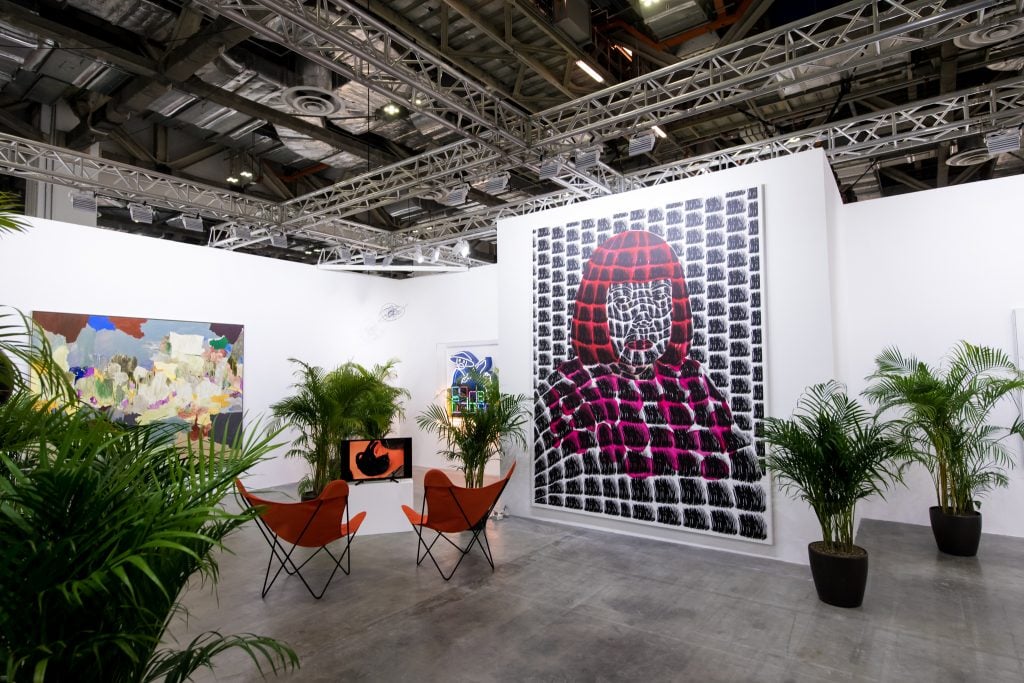
Neugerriemschneider’s booth at ART SG 2023. Courtesy of ART SG.
This led some to question, despite the amount of wealth in the city-state and the region’s potential growth, if the collector pool in the region was big enough to sustain a fair of this size and a growing art market.
Many dealers, however, chose not to speculate as they wanted to see the fair and its co-founder Magnus Renfrew—a highly respected figure in Asia’s art scene—succeed.
“For a first-year fair, I think it’s got off to a very good start. The sales have been okay. My feeling is that there’s going to be activity right up until 5 pm on Sunday,” Renfrew told Artnet News. “We are really expecting things to be happening throughout the upcoming days. The energy has been positive. People feel welcomed by the city, and that there’s a sense of the potential for the future. This is really just the first step.”
While sales have traditionally been an important benchmark for an art fair’s success, a new barometer is needed for fairs in Asia, especially for young fairs in young markets, Zwirner’s Xu pointed out.
“For example, established, active collectors may know about us, but not the younger ones. That’s why we want to do the fair—we want to reach out to those who buy cars, shoes, Street art, and NFTs, and introduce them to other kinds of art and other galleries. This is a conversion process,” Xu noted.
ART SG runs through Sunday, January 15, 2023.
More Trending Stories:
German Researchers Used Neutrons to Peek Inside an 800-Year-Old Amulet—and Discovered Tiny Bones
French Archaeologists Make ‘Unprecedented Discovery’ of What May Be the Remains of a Roman-Era Mausoleum
Art Industry News: A San Francisco Dealer Was Caught on Video Hosing Down a Homeless Woman in Front of His Gallery + Other Stories
In an Ironic Twist, an Illustrator Was Banned From a Reddit Forum for Posting Art That Looked Too Much Like an A.I.-Generated Image
Instagram Has Removed an Illustration From Cardi B’s Account After the Artist Threatened to Sue for Copyright Infringement
A Minnesota University Is Under Fire for Dismissing an Art History Professor Who Showed Medieval Paintings of the Prophet Muhammad
The Truth About Anna and Larry’s Relationship Status, Jens Hoffmann and His Imaginary Friends Start a Gallery, and More Juicy Art World Gossip
